In the golden sands of Dahshur, where the scorching Egyptian sun casts long shadows across the desert landscape, stands a monument unlike any other in the ancient world. The Bent Pyramid rises from the earth like a testament to human ingenuity and adaptation—its unusual silhouette telling a story of architectural ambition, experimentation, and perhaps even divine intervention.
The Pharaoh’s Vision
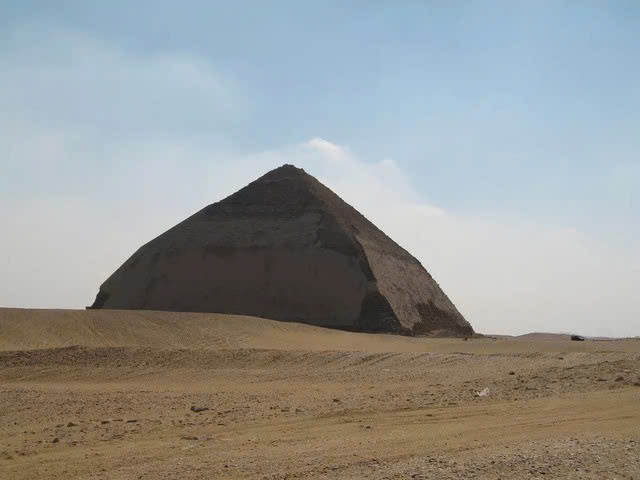
Around 2600 BCE, Pharaoh Snefru gazed across his domain with dreams of immortality. As founder of Egypt’s mighty Fourth Dynasty, he sought to create a monument that would carry his soul to the heavens and his name through eternity. His architects had already attempted greatness at Meidum, but their creation had faltered. Undeterred, Snefru commanded a new beginning at Dahshur.
“Build me a dwelling place worthy of a god,” the Pharaoh proclaimed to his master builders. “Let it touch the sky itself.”
The builders bowed low before their king. They knew the challenge that lay ahead—to construct a pyramid more ambitious than any before, rising 105 meters into the sky with a massive base stretching 189 meters on each side. They would need all their knowledge, all their skill, to fulfill the Pharaoh’s vision.
A Work in Progress
For years, thousands of workers quarried limestone, hauled massive blocks across the desert, and positioned them with remarkable precision. The structure began to rise at an ambitious angle of 54 degrees, its smooth white limestone casing gleaming in the sun. Inside, the craftsmen created two separate chambers with their own entrances—one from the north and another from the west—connected by a narrow passageway.
But as the pyramid reached halfway to its intended height, alarm spread among the builders. Ominous cracks appeared in the structure, threatening catastrophe. Perhaps they remembered all too well the collapse at Meidum. Perhaps they heard the whispers that the gods themselves were displeased with the Pharaoh’s ambition.
The Pivotal Decision
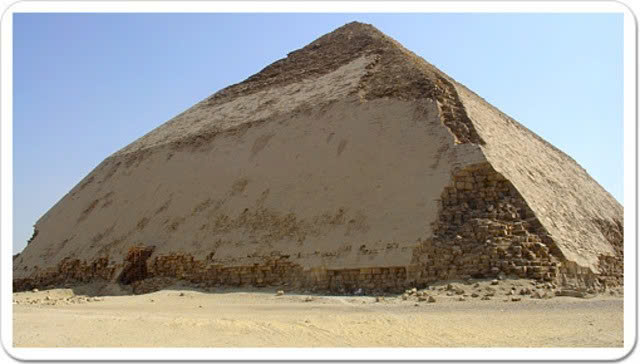
The royal architect approached Pharaoh Snefru with grave news. “Great One, live forever! The weight of stone presses down too heavily. If we continue as planned, the entire monument may crumble.”
Pharaoh Snefru, known for his wisdom as much as his ambition, made a momentous decision. “Then we shall adapt. Change the angle. Save what we have built and complete my monument.”
And so, at 49 meters above the ground, the slope of the pyramid changed dramatically—from 54 degrees to a gentler 43 degrees. This singular decision created the distinctive bent shape that would fascinate visitors for millennia to come.
Innovations in Stone
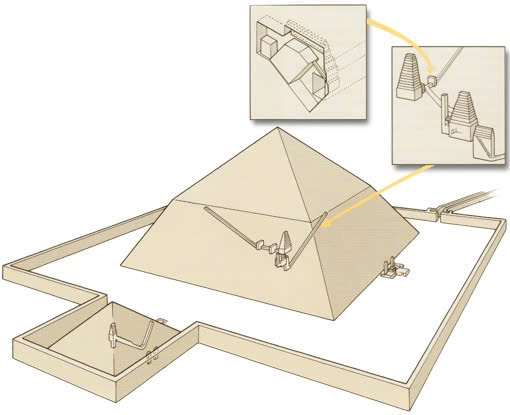
What appeared to be a compromise became a showcase of Egyptian ingenuity. The builders introduced revolutionary techniques to strengthen their creation:
The casing blocks were no longer laid horizontally but cut as rectangular blocks and positioned at an inward slope of 17 degrees—using gravity itself to reinforce the structure. Inside the chambers, they perfected the art of corbelling, where each successive layer of stone projects slightly inward, distributing the enormous weight of the pyramid above.
Around the main structure, a complex arose that included a valley temple, a smaller satellite pyramid believed to house the king’s spiritual essence (Ka), and various administrative buildings that supported the religious activities of the complex.
The Legacy Continues
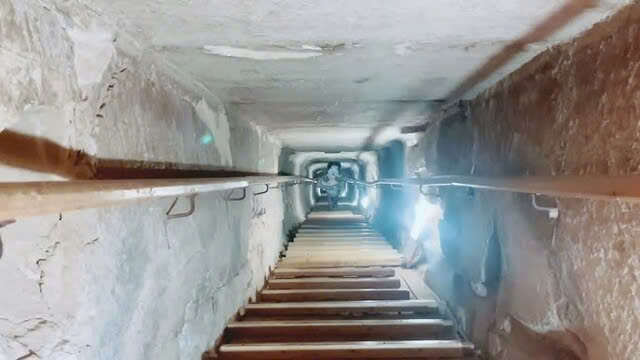
Not far from the Bent Pyramid, Pharaoh Snefru commissioned yet another monument—the Red Pyramid. This structure incorporated all the lessons learned at Dahshur, maintaining the gentler angle of 43 degrees throughout and achieving the classic pyramid shape that would become iconic in Egyptian architecture.
Together, these structures tell the story of architectural evolution, of trial and error on a monumental scale. They represent not failure, but the Egyptian capacity for adaptation and problem-solving.
Whispers Across Time
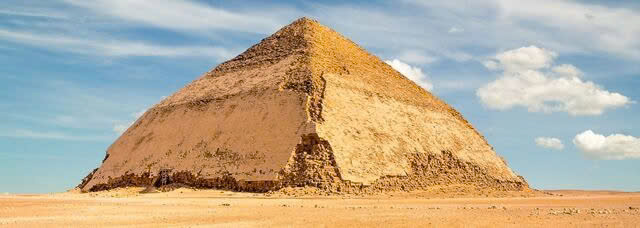
For centuries after its completion, the Bent Pyramid stood as a place of mystery and religious significance. Later pharaohs would add their own marks to the complex, with clay sealings from the Fifth Dynasty discovered by modern archaeologists. Even in the Middle Kingdom, centuries after Snefru’s death, additions were made to honor the site’s importance.
When nineteenth-century explorers like William Flinders Petrie and Ahmed Fakhry first began to study the pyramid in detail, they uncovered the remarkable story of its construction. Today, research continues through the efforts of the German Archaeological Institute and the Free University of Berlin, each new discovery adding depth to our understanding of this unique monument.
Video
The Meaning Behind the Bend
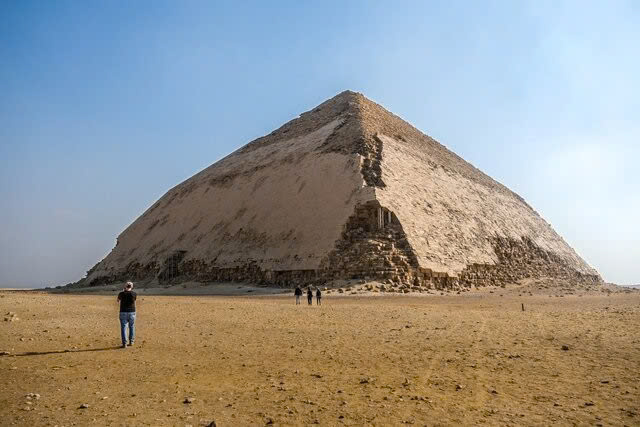
Some scholars suggest that what began as a structural necessity was given deeper meaning by the clever Egyptian priests. Perhaps the bent shape came to symbolize Pharaoh Snefru’s dual role as ruler of both Upper and Lower Egypt. Others propose connections to the solar cult, with the pyramid’s unusual angles aligned to celestial bodies, marking the Pharaoh’s divine connection to the cosmos.
Whatever the truth, the Bent Pyramid stands as proof that what appears to be imperfection may actually be adaptation. What seems like failure may be the seed of innovation.
A Monument to Human Resilience

Today, as the Bent Pyramid continues its silent watch over the desert, its distinctive silhouette reminds us of a universal truth: greatness often emerges not from flawless execution of the original plan, but from the courage to adapt when challenges arise.
In the face of structural uncertainty, Pharaoh Snefru and his builders did not abandon their dream—they reimagined it. Their creation, unusual though it may be, has outlasted countless “perfect” monuments and continues to inspire wonder nearly five millennia later.
The Bent Pyramid of Dahshur is more than just an architectural curiosity. It is a testament to human ingenuity, adaptation, and the relentless pursuit of immortality through creation. In its unconventional beauty, we find a mirror of our own journeys—complete with unexpected turns, necessary compromises, and the stubborn determination to leave something meaningful behind.

